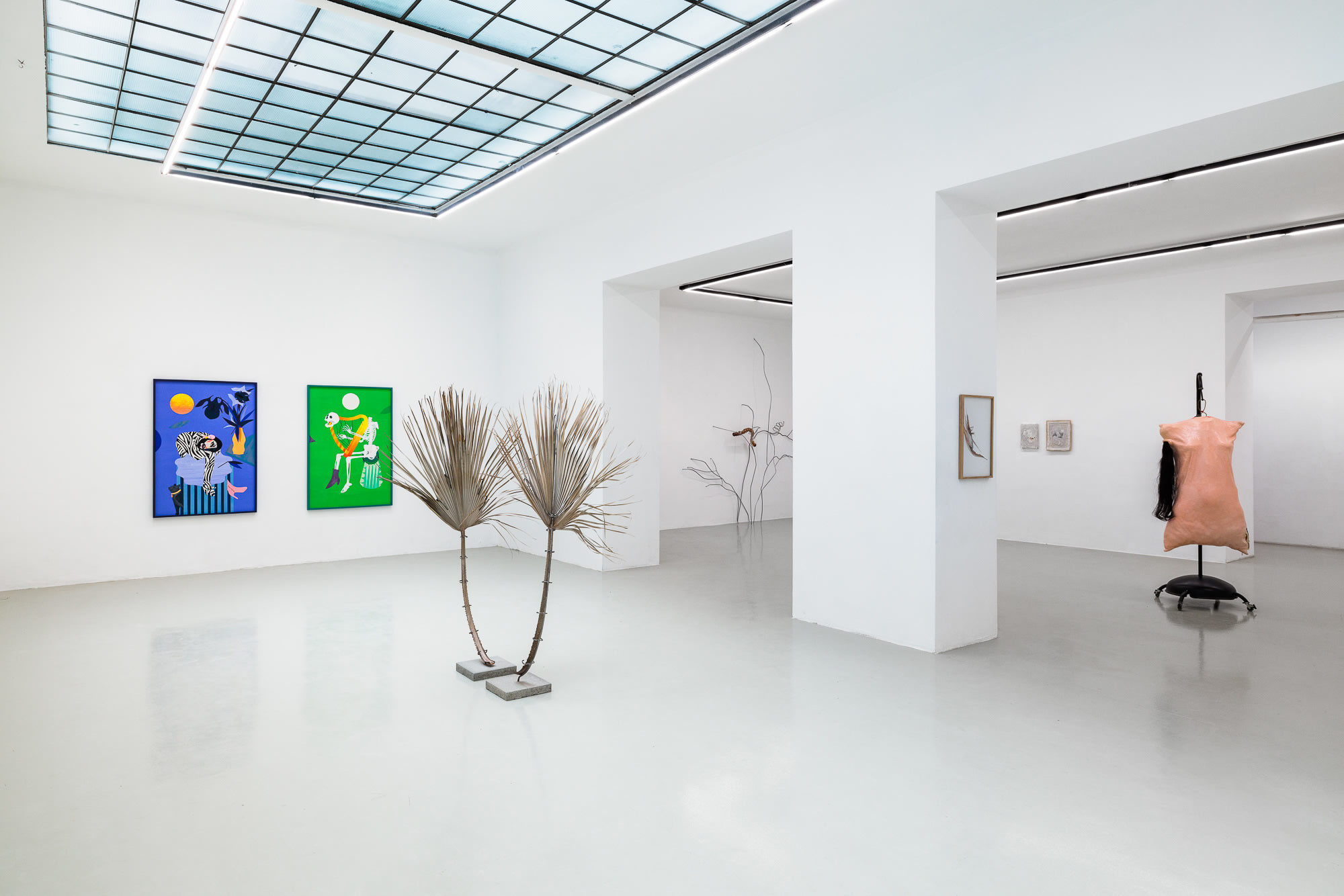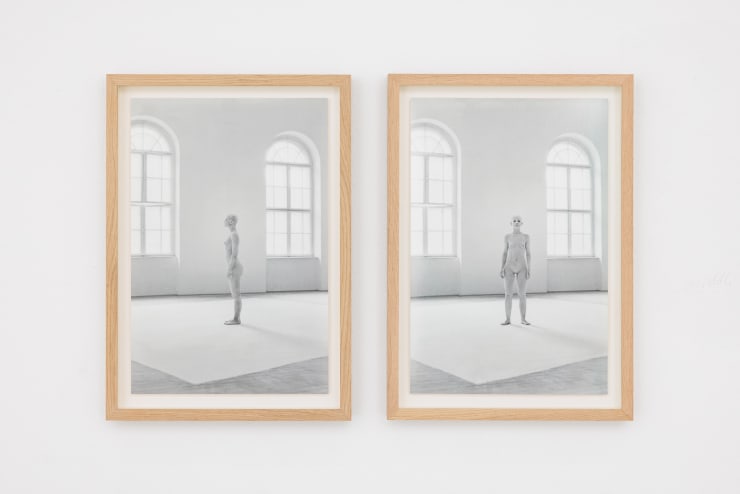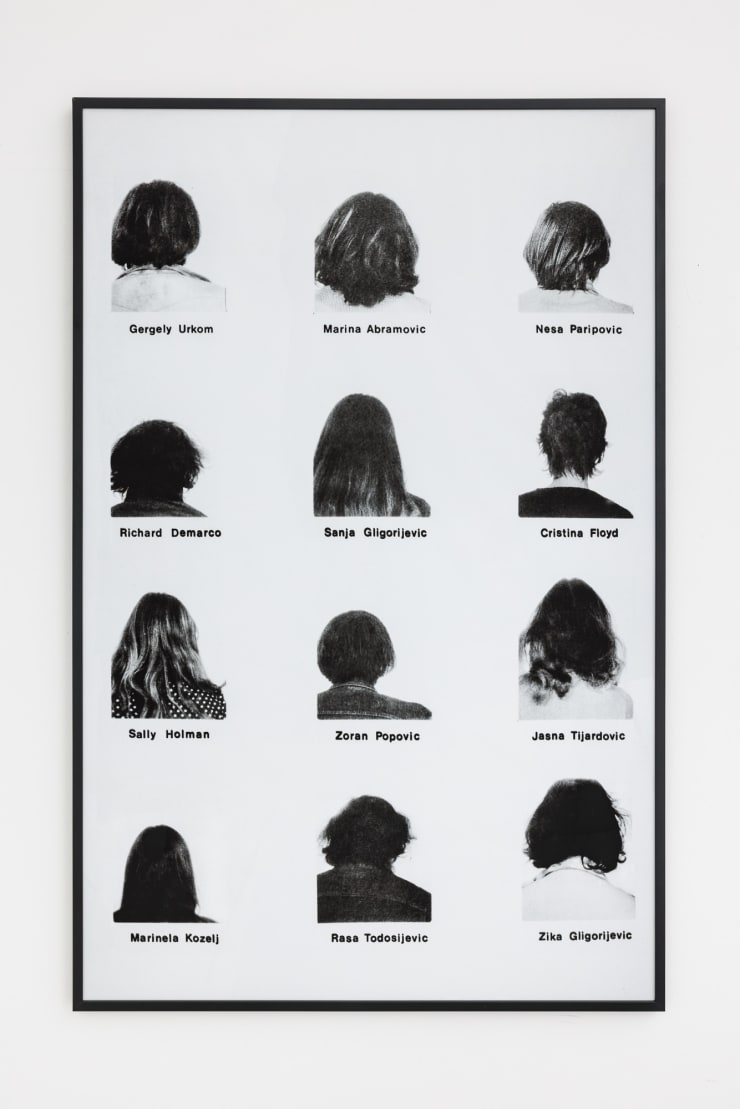-
In The Mood For Interruption - Curated by Tevž Logar
Featuring Bora Baboçi, Nona Inescu, Damir Očko, Tanja Ostojić, Duba Sambolec, Neša Paripović -
In the realm of the official narratives of art history the body, as a space that ‘archives’ social, political, cultural, and personal traces, often served as a powerful medium for revealing stories that have been historically marginalised or repressed. On the other hand today, the body holds significant importance in contemporary society, serving as a central focus in numerous tangible cultural, social, and political discourses in relation to the questions of gender identity, technology, labour, health, environment and migration.It is through the lens of this relationship, and in the context of the conceptual framework of this year’s Curated by festival, Untold Narratives, that informs the approach of the exhibition In the Mood for Interruption at Galerie Kandlhofer, through the body itself. The exhibited works offer multiple perspectives that can help us to understand more deeply its profound importance in shaping and reflecting our everyday.In contemporary society, the body is not just a biological entity but also a complex symbol of identity, agency and experience. Its significance permeates various aspects of life, reflecting broader cultural, social, and political dynamics. In the context of contemporary art, we can uncover a multitude of repressed narratives that challenge dominant discourses and offer new perspectives on identity, power, and representation.
-
 Bora BabociSuffer Me Not the Return, 2024Piece 1: mortar block with pigments
Bora BabociSuffer Me Not the Return, 2024Piece 1: mortar block with pigments
Piece 2: textile with mortar and pigments26 x 35 x 3 cm; 10 1/4 x 13 3/4 x 1 1/8 in -
 Nona InescuAfterlife (Strelitzia nocolai), 2023Digital print on Hahnemeuhle Rag Satin paper60 x 40 cm, 23 5/8 x 15 3/4 inEdition 1 of 3 plus 1 AP
Nona InescuAfterlife (Strelitzia nocolai), 2023Digital print on Hahnemeuhle Rag Satin paper60 x 40 cm, 23 5/8 x 15 3/4 inEdition 1 of 3 plus 1 AP -
 Damir OčkoHomo Paid Bro, 2024collage-mounted on archival cardboard, gouache on paper, fabric, glitter, acrylic ink, gold leaf150 x 100 cm, 59 x 39 3/8 in
Damir OčkoHomo Paid Bro, 2024collage-mounted on archival cardboard, gouache on paper, fabric, glitter, acrylic ink, gold leaf150 x 100 cm, 59 x 39 3/8 in -
 Tanja OstojićPersonal Space , 1996photos of the performance
Tanja OstojićPersonal Space , 1996photos of the performance
Set of 2 B&W barite photos, 40 x 26 cm each + oak frames, museum glassEdition: 1/5 + 2 AO -

-
-
 Tanja OstojićPersonal Space photo series (1995-96), 1996Set 3 (4 photos)
Tanja OstojićPersonal Space photo series (1995-96), 1996Set 3 (4 photos)
Black & white barite photos 40 x 40 cm each + oak frames, museum glass40 x 40 cm
15 6/8 x 15 6/8 inEdition: 1/5 + 2 AO -
 Tanja OstojićPersonal Space photo series (1995-96), 1996Set 2 (4 photos)
Tanja OstojićPersonal Space photo series (1995-96), 1996Set 2 (4 photos)
Black & white barite photos 40 x 40 cm each + oak frames, museum glass40 x 40 cm
15 6/8 x 15 6/8 inEdition: 2/5 + 3 AO -
 Tanja OstojićPersonal Space photo series (1995-96), 1995Set 1 (4 photos)
Tanja OstojićPersonal Space photo series (1995-96), 1995Set 1 (4 photos)
Black & white barite photos 40 x 40 cm each + oak frames, museum glass40 x 40 cm
15 6/8 x 15 6/8 inEdition: 1/5 + 4 AO
-
 Tanja OstojićBlack Square on White, 1996 / 2001Conceptual body-art work, 49th Venice Biennale / 1 B&W barite photo 40 x 40 cm + oak frames, museum glass, and vinyl lettering on the wall (digital file)Edition: 2/5 + 2 AO
Tanja OstojićBlack Square on White, 1996 / 2001Conceptual body-art work, 49th Venice Biennale / 1 B&W barite photo 40 x 40 cm + oak frames, museum glass, and vinyl lettering on the wall (digital file)Edition: 2/5 + 2 AO -
 Tanja OstojićPersonal Space , 1996photos of the performance
Tanja OstojićPersonal Space , 1996photos of the performance
Set of 2 B&W barite photos, 40 x 26 cm each + oak frames, museum glass
Edition: 1/5 + 2 AO
-
-
 Duba Sambolec1/2 Volume Hanging, 2010-2011Silicone, horsehair, fabric, metal, paint, readymade, different materials
Duba Sambolec1/2 Volume Hanging, 2010-2011Silicone, horsehair, fabric, metal, paint, readymade, different materials -
 Nesa Paripovic´UKRŠTANJE / CROSSING, 1995digital photography86 x 104 cm; 33 7/8 x 41 in(printed 2012. edtion 1/5)
Nesa Paripovic´UKRŠTANJE / CROSSING, 1995digital photography86 x 104 cm; 33 7/8 x 41 in(printed 2012. edtion 1/5) -
-
IN THE MOOD FOR INTERRUPTION : curated by Tevž Logar
Past viewing_room























